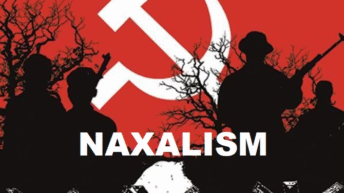
“A disposition to preserve and an ability to inspire, taken together, would be my standard of a statesman” – Edmund Burke
When asked whether the Indic social philosophies – broadly shared by Hinduism, Jainism, Buddhism, Sikhism, Zoroastrianism, and even Sufi Islam – are essentially conservative, the RSS Sarsanghchalak, Shri Mohan Bhagwat replied once that the Sanatana Dharma is not conservative but simply timeless in its principles, though it adapts to changes and circumstances and preserves what is tested and valid while discarding what has become outdated and reforming what has decayed or been misinterpreted.
The term Dharma has been interpreted by various eminent scholars as the Sanskrit matrix of the concept of ‘perennial philosophy’ (1), encompassing the various applications and modulations of the Dharma in its cosmic and human dimensions. Conservatism is inherent in the notion that a set of principles regulates the universe and should inspire and regulate the functioning of society and of the individuals that compose it. The famous English Christian writer C S Lewis described that philosophy in his essay The Abolition of Man, written in 1943.
THE ROOTS OF CONSERVATISM IN THE WEST
In the historical context, the ‘conservative’ label was first employed in Great Britain in the wake of the industrial revolution that swept society in tandem with overseas colonial expansion, and displaced many newly destitute peasant families into urban manufacturing hubs. The first English conservatives stood for the preservation of the old rural, feudal order and generally disapproved of colonial conquests and of the new capitalist classes and their liberal policies, usually detrimental to the landed gentry and to the poorer agricultural populations.
In the same period, the French Revolution, across the Channel manifested the impact of the liberal ideas, often imported from Britain and applied in the young United States. It quickly turned into a bloody conflict between ‘moderates’ who sought a constitutional monarchy, with limited powers, parliamentary control, and a liberal economy, and radicals determined to set up a revolutionary anti-aristocratic republic dedicated to spreading its ideology to the rest of Europe, through war if needed.
Moderates are almost always defeated when violent confrontations occur. While the excesses of the French Revolutionaries, and the chaos and suffering they created strengthened the case made by the British Tories and by ‘Old Whigs’ led by Edmund Burke, they also doomed the first French Republic to fail and, as French historian Pierre Gaxotte pithily put it, ‘to give herself to a sword’ in the person of Napoleon’s de facto military dictatorship (2). Conservatives all over the Western world rejected Bonapartism although, over time, it would eventually acquire conservative credentials as well, primarily because of its dynastic dispensation, given the authoritarian and patriarchal character of the Napoleonic codes of law, reflecting their founder’s views of society.
For most of the nineteenth century and the first half of the twentieth century, Conservatism in Europe rested on a few steady beliefs and institutional pillars: religion (whether Catholic, Orthodox, or Protestant), monarchism (or, as an alternative, a strong central power backed by the Church), primacy of duties over rights, patriotism, limited popular representation (elections were grudgingly accepted but universal franchise was regarded as unreasonable and dangerous by most Conservatives until not so long ago. Any acceptable democracy would have to be tempered by experienced and seasoned counsel from traditional elites, respect of class hierarchies, skepticism about human nature left to itself and a distrust of socially and economically intrusive government. Those precepts gradually evolved until the Second World War which erupted at a time when various revolutionary regimes (in the USSR, Germany, and Italy, not to forget a short-lived ‘Popular Front’ government coalition in France) were putting paid to the old order, already upset by the previous pan-European conflict.
Following the devastating First World War that changed the face of Europe, Conservatives generally gathered under the banner of a more moderate and welfare-oriented Christian Democratic agenda. Most gave up their attachment to the monarchical tradition, embraced welfare policies inspired by the social doctrine of the Roman Church in Catholic-majority nations, and took a more liberal view of morality and culture. At present it is hard to identify classical conservative precepts in the ‘Centre-Right’ parties that dominate European politics, together with the Social Democrats, as they tend to focus their programs and actions on the liberalisation of the economy without strongly opposing the neo-liberal Left’s tenets including easy abortion, quick divorce, the politicisation of homosexuality, the promotion of transgenderism, child sexual ‘education’ and the like. The defence of conservative values has been left in many countries to the care of the so-called ‘Far Right’, much of which used to be simply the ‘Right’ until about fifty years ago.
The self-styled Centre-Right embraces or, at least, acquiesces to many of the ‘progressive’ ideas championed by the new Left which has practically wiped out the old proletarian Left whose traditional working-class electorate has shrunk into near insignificance. The abdication of a large part of the Right about its ancestral ideological planks: the motherland, the family, religion, and the respect of traditions and mores has helped the Left to take over the intellectual and educational domain in much of the West. In the United States, the Republican Party is split between the big business-supported, economically liberal (in the European sense) RINOS (dubbed ‘Republicans in Name Only’ by their opponents) and the middle-class American ‘tea party’ nationalists whose sagging fortunes were revived by Donald Trump’s political campaigns. The latter GOP voters may be seen as ‘Conservatives with American characteristics’ and are likely to be protestant (of the Evangelical and Baptist variety) rather than Catholic as the latter tend to be more socially liberal. Evangelical Conservatives have influenced like-minded trends in Latin America, from Mexico to Argentina.
To be continued…






Add comment